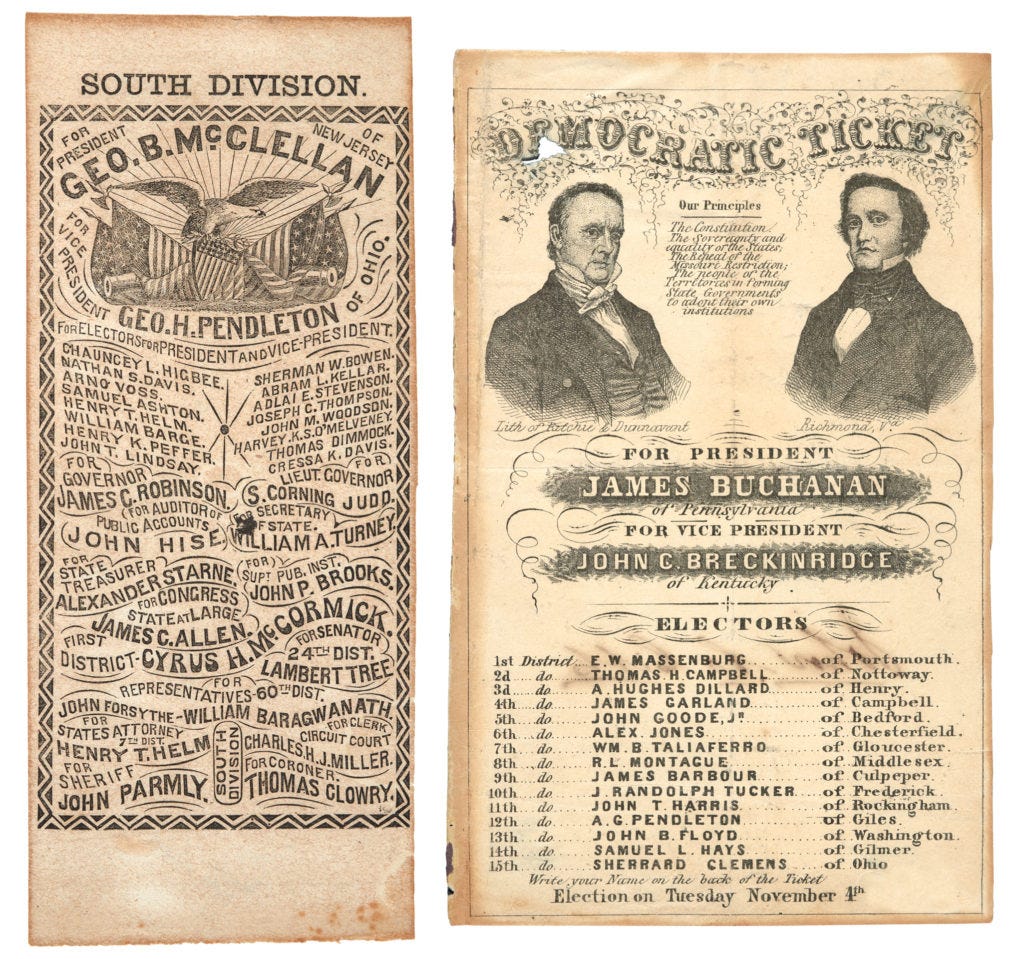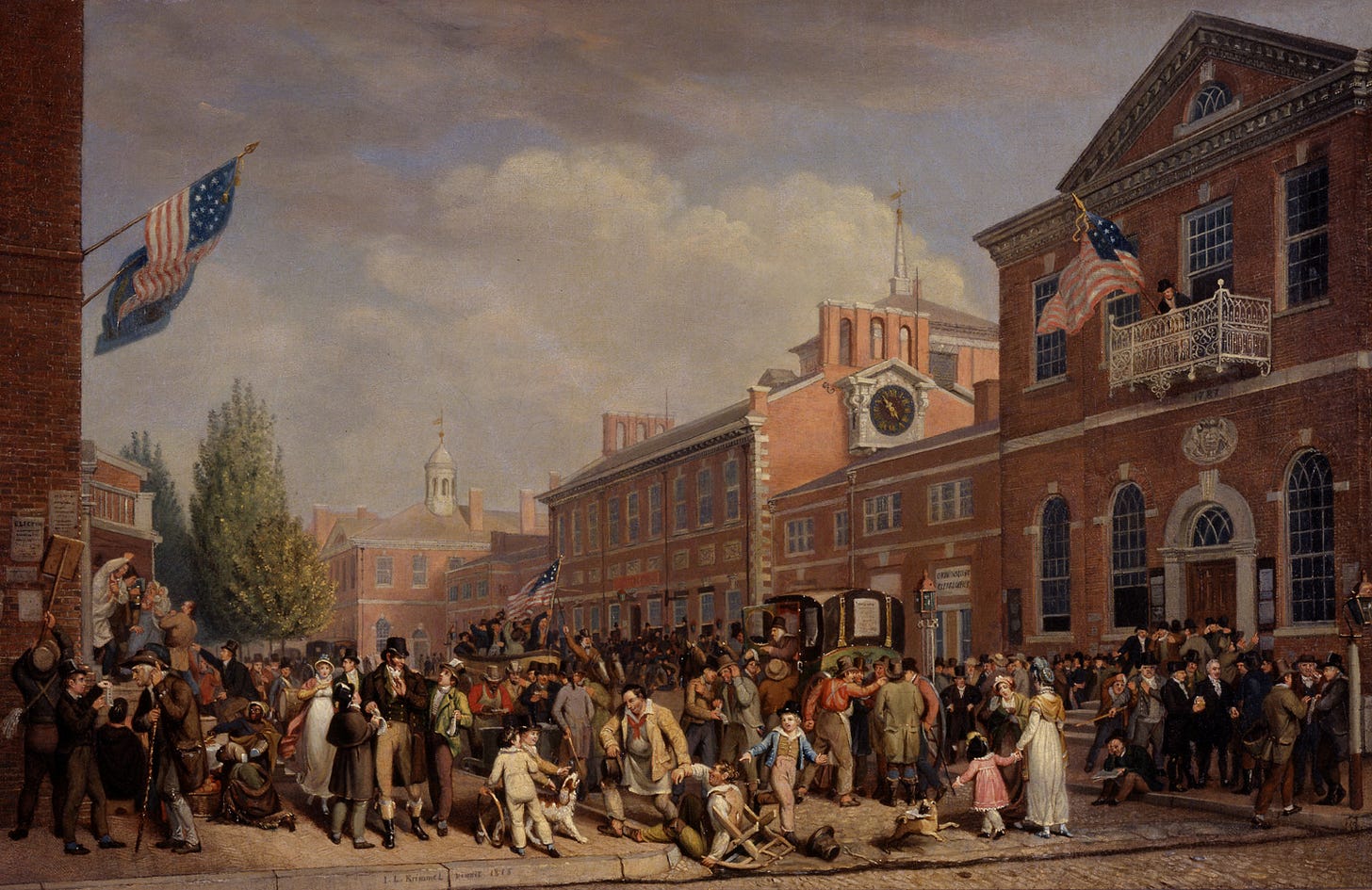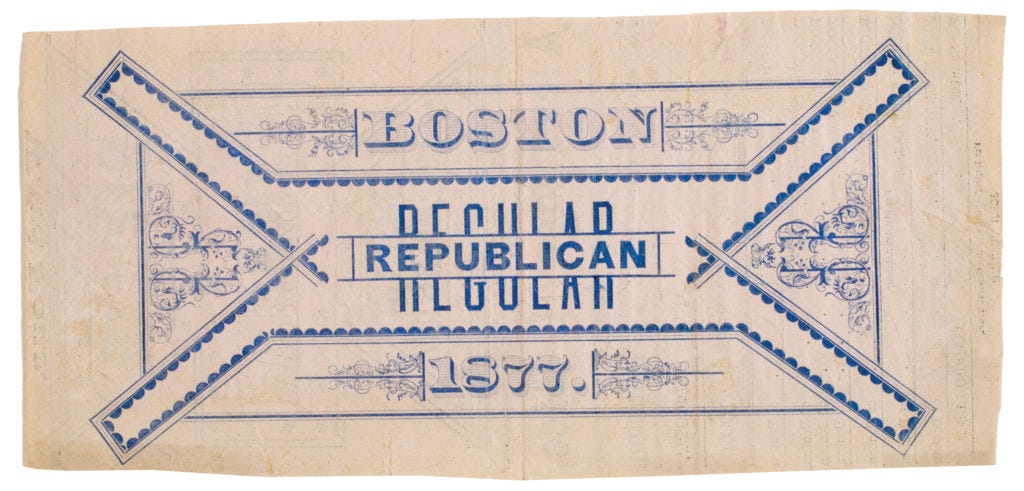Today, our ballot is a boring piece of paper. But it wasn’t always this way.
In America’s early decades, voting was done by voice. Elections were public spectacles with parades, fairs, and lots of drinking. Citizens gathered in town squares to watch voters step forward, one by one, and announce their vote. Voting was a party! … It was also an opportunity for intimidation and bribery.
As our nation’s population grew, the spectacle remained, but the efficiency of paper-based voting won out over voice voting.
However, there was no federal regulation on how to run an election, so in the mid 19th century, political parties saw an opportunity: They created their own ballots. These ballots were pre-completed with a party’s chosen candidates and a voter would just drop them into a ballot box. They were called “tickets” because the small slip of paper resembled a train ticket — and voters could use this pre-printed ticket as their ballot.
Perhaps unsurprisingly, politicians designed these ballots to be eye-catching. They functioned as much as campaign propaganda as a ballot — in part because voting remained a public affair and spectacle. These early paper ballots weren’t more private than voice voting, just more efficient.

Thus, perhaps also unsurprisingly, this system led to calls for election reform. It was possible for a voter to fold up additional ballots within the one they submitted, voters couldn’t split their ticket between candidates from different parties, and bribery was still rampant with party workers influencing voters at polling sites.
Our nation needed a solution. And the answer came from down under.
In 1858, in Victoria, Australia, rather than having voters bring in their own ballots, the government supplied printed ballots that a voter would mark up at the polling place. Voters received only one ballot listing all candidates in identical fonts. The ballot showed no favor to one candidate over another, and these ballots were completed in private booths, away from the prying eyes and influence of a political party.
The modern secret paper ballot was born.
In 1888, this ballot design made its way to America, with New York and Massachusetts both adopting this new way of voting.
In 1891, in his inaugural address, the newly-elected governor of Maine Edwin Burleigh made the case for implementing the Australian ballot in the state. He said:
It is the sacred duty of popular government to maintain, in every possible way, the purity of the ballot. The nearer our elections come to fairly registering the personal convictions of each individual voter, the closer will they conform to the true spirit of our institutions. It is the concurrent testimony of those States which have made a trial of it, that the Australian ballot system comes nearer securing this desirable result than any other yet devised.
Soon, all states started using secret ballots to solve the persistent problems of intimidation, bribery, and voter fraud.

The Australian ballot transformed American elections. The design privatized, bureaucratized, sanitized, and individualized what was once a public affair. Thanks to this ballot, elections were now run indoors, organized by government officials, and executed on a single state-produced ballot filled out in a private booth.
So, as you go vote today (if you haven’t already done so!), take a minute to appreciate the power of that ballot — not only as your voice in the political process but also as a technology that transformed how we elect politicians.








